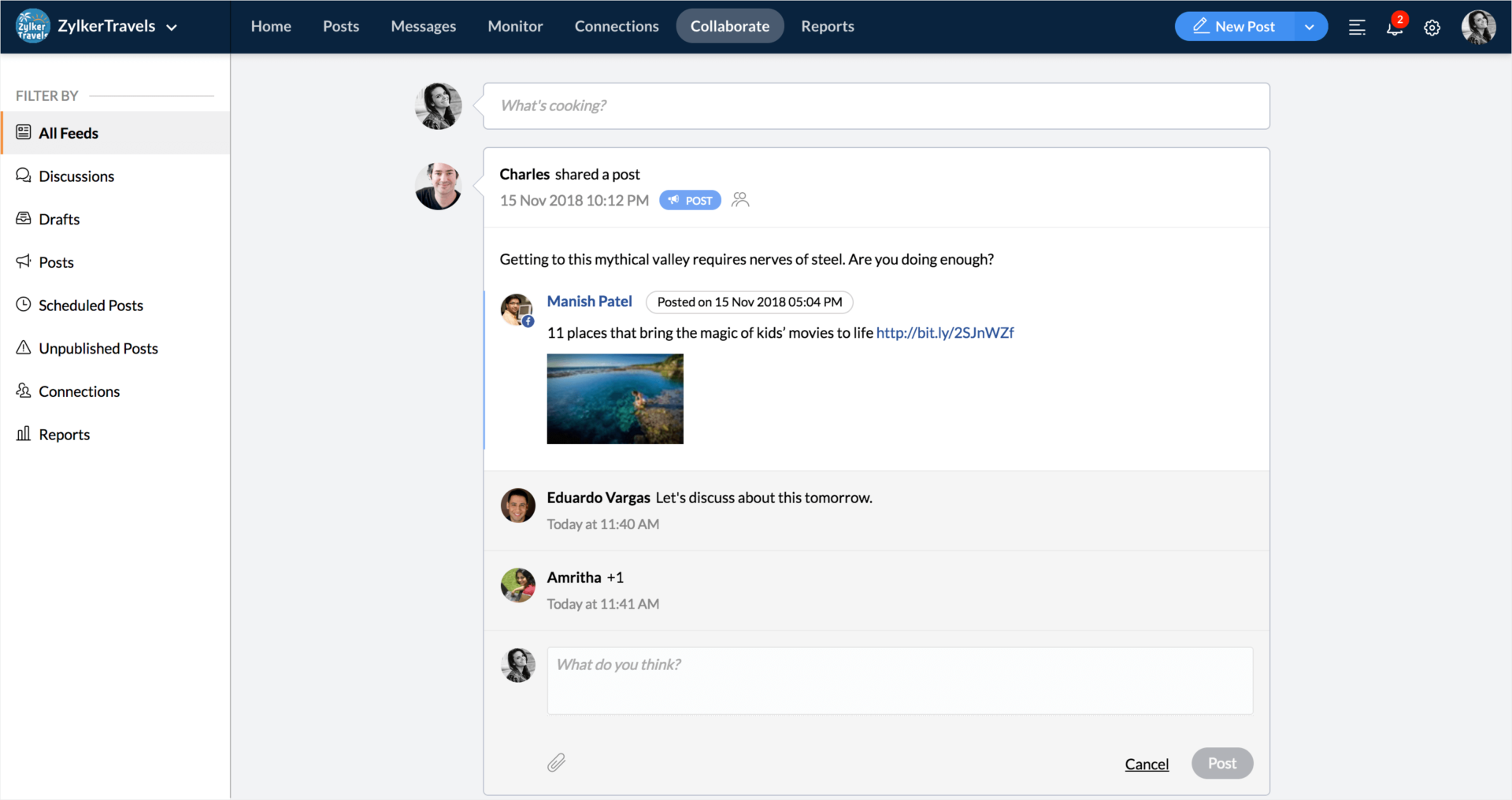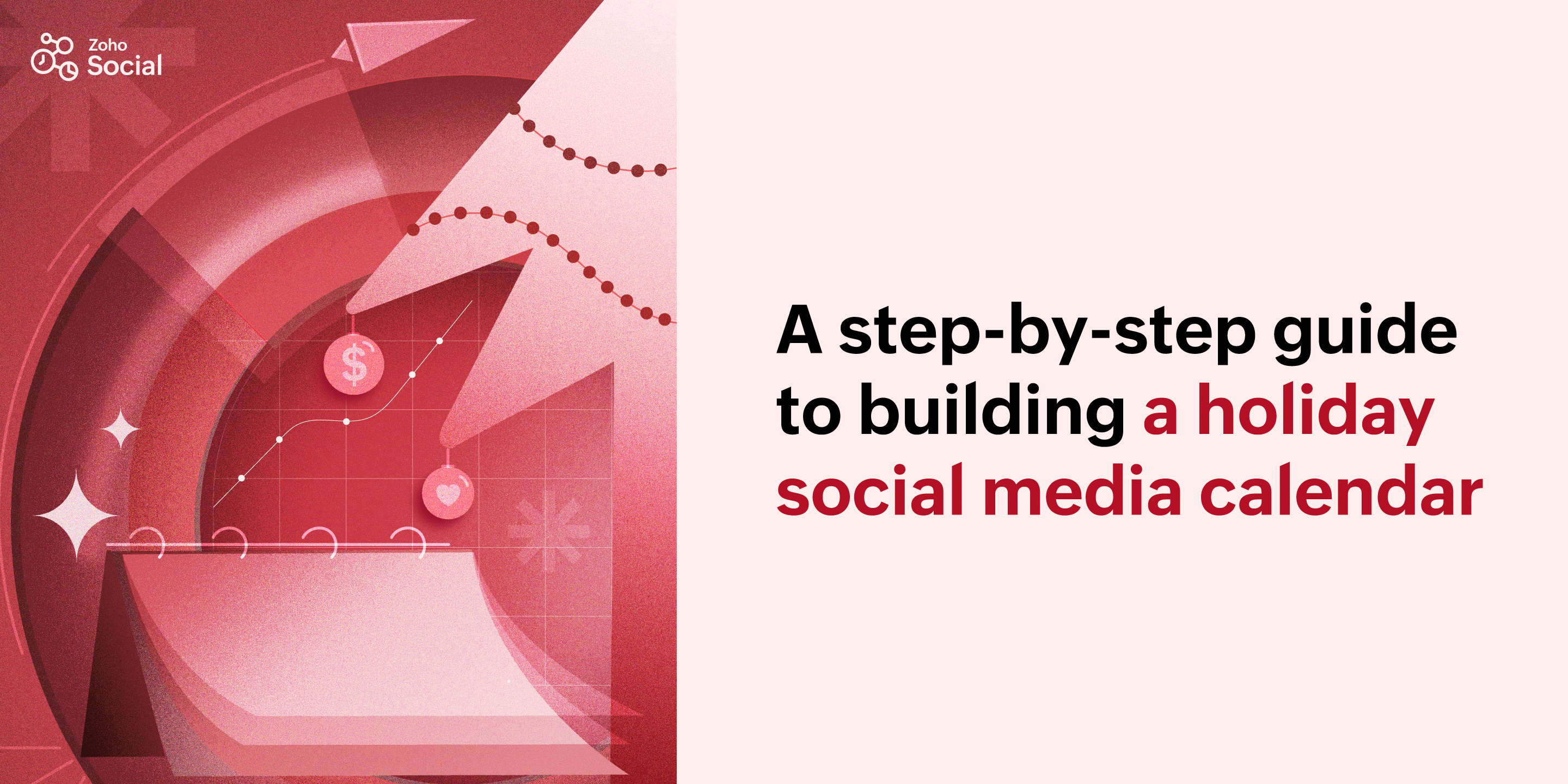Ten tips to drastically improve your social media presence
- Last Updated : August 17, 2023
- 4.5K Views
- 13 Min Read

When we talk about social media marketing, there are so many things to consider that it can often be overwhelming. And that’s totally understandable because it’s pretty evident that social media marketing success can’t be achieved by merely making posts on your social media profiles. The approach needs to be cohesive, well-planned, and perfectly executed.
It helps to consider your profile as sort of your brand’s landing page on social media. What’s your audience going to see when they open up your profile? You’ll need to make this as captivating as possible because the first impression you make is going to stick with them for a long time. If you make a great impression on them, it’s more likely that they’ll be interested in actually learning about you and what you do, engaging with you, and even purchasing what you have to offer.
There’s a lot at stake when it comes to social media marketing, and that’s precisely why it has to be done really well. We’ve put together this list of ten tips to help make it easier for you.
1. Use the correct image size
Different image sizes work best on different networks. It’s a good idea to be familiar with the right one for each network, so that your brand page always looks professional. Using the wrong image size could make your page look ugly, ridiculous, or worse—amateur. No one will trust you if your page only shows half your logo, or if text you’re using is cut out from the picture.
You should also think about how the images you’ve chosen appear in other places. For example, how will your profile picture look in the comments section, when you’re replying to your audience? All of these are things that you should keep in mind, so you choose the best possible images for each network.
While there are various guides available that will tell you the best image sizes to use, we’ve compiled a list for the most commonly used networks out there:
- Facebook profile picture: 170 X 170 pixels
- Facebook cover photo: 828 X 465 pixels
- Twitter profile photo: 400 X 400 pixels
- Twitter header image: 1,500 X 500 pixels
- LinkedIn profile photo: 400 X 400 pixels
- LinkedIn custom background: 1584 X 396 pixels
- LinkedIn cover photo: 974 X 330 pixels
- LinkedIn banner image: 646 X 220 pixels
- Instagram profile picture: 110 X 110 pixels
- Pinterest profile picture: 150 X 150 pixels
- YouTube profile picture: 800 X 800 pixels
- YouTube cover photo: 2,560 X 1,440 pixels
2. Stay consistent across networks
To be successful in social media, it’s important that your brand stays consistent on all the networks that it’s on. This will lend authenticity to your brand, and that is always more attractive to people on social media.
Think about it: the average social media user isn’t on these channels to interact with faceless companies. They’re there to have real, meaningful conversations. That’s what your brand will have to provide. People don’t use social media to talk to logos, they want to talk to real people. To accomplish this, you’ll need to spend time thinking about the tone that you’re going to use on social media.
Choose a tone that reflects your brand’s culture and values. The tone that you use will make a huge difference in how your brand is perceived, and so it’s important to put a lot of thought into it.
Once you’ve settled on your tone, make sure that you’re consistent with it throughout the networks that you’re using. There can—and should—be a little variation of course, because different tones work better on different platforms. For example, a professional tone is more suited to LinkedIn, while you might want to take a more fun approach on Twitter and Instagram. But ultimately, your content on all networks should feel like it’s coming from the same person.
When we talk about consistency, however, it’s not just about the tone that you’re using. You’ll also need to make sure that everything on your profile is consistent across networks. This also includes the images and handles that you use on your social media profiles. An easy way to do this is to always use your logo as your profile picture, and use the name of your brand as your handle.
3. Provide as much information as possible
Every network allows you to provide information to your followers—and you should take advantage of it. Fill up every field you can so that anyone who’s visiting your page knows exactly who you are, what you’re offering, and what they can expect from you. Some companies go even further and share what values they believe in, to their audience.
Another advantage of this is that your readers will perceive you as authentic when they look at your profile. A page with filled in details simply looks better than one where things are missing or incomplete.
Here are some of the things you should share with your audience on your social media profiles:
- What your company does
- Your contact details
- A current address
- The location of your headquarters
- The industry you operate in
- The size of your company
- The values your company believes in
- What your followers should expect from you
- Any other way to contact you, if needed
- A CTA, for them to take further action
While you do this, however, remember to use the tone that you’ve already decided on. You could also try to make this section more memorable, by incorporating devices such as humor or storytelling as well.
An important thing to remember is to keep this section updated at all times. When there are any changes made to your brand, or when information that you’ve provided becomes outdated, it’s important to come back to these sections and update them to reflect the current situation. We recommend checking in regularly—not only will there be changes to your business, but social networks will frequently add, change, or update the fields that are available for you to fill in.
4. Choose the right networks for your brand
While we’ve spoken about using a consistent tone across networks and providing complete information on every network, there’s a more fundamental question that you’ll need to answer. What networks should your brand even be on? Let’s face it: you can’t be on every social network there is. Even if you have the bandwidth to do that, it’s probably not a good idea. Some networks will not be popular among your target audience, and some of them may not be suited for your industry at all.
You’ll necessarily have to pick and choose the networks that you want to be on. So how do you do that? Well, we’ve written a separate guide for it, but we’ll summarize the main things to keep in mind here:
- Size of the network
- Demographics of the network
- Type of content that you want to post
- Bandwidth available
The demographics of the network is important, because you’ll need to choose the ones that are most popular among your target audience. To do this, you’ll need to clearly define who your target audience is.
Firstly, you could create the profile of your “ideal customer”—a detailed sketch of the type of person you want to target. While creating this, make sure you’re going into as much detail as possible. For example, you could define your audience as “school children,” and you could get by with that. But if you get more specific, and say your target audience is school children between the ages of 13-17 who live in rural areas, have a particular household income range, are male, and are interested in reading sci-fi comics, and can speak certain languages, you’re much more likely to succeed.
It might also help to give your ideal customer a name, an age, a backstory, and a nickname. Play around with this as much as you can. This will help you see them as a real person with real needs, wants, and feelings. Connecting with your ideal customer will help you create content that’s better suited to them.
Some of the information you need for your ideal customer are:
- Age
- Gender
- Location
- Languages spoken
- Occupation
- Income
Another thing that you could do is to take a look at your existing customers, and then collate that into demographic data. You’ll be able to find out which demographics use your product the most, and you can use this data to choose the networks that are popular among them.
Of course, you can use both these approaches to arrive at a conclusion, as well.
5. Create a content strategy
One of the most important things that you’ll need to succeed in your social media marketing efforts is to have a clear content strategy for social media. Your content strategy should cover both the type of posts that you’ll want to make and how frequently you’ll want to make them.
The kind of posts that you’ll make will depend on the social media marketing goals that you’ve set. There are many possible goals for social media marketing. Some of them are:
- Improving brand awareness
- Generating new leads
- Bringing traffic to your website
- Making sales
- Providing support to customers
When you create your posts, it’s also important to keep in mind the tone that you’re going to be using. This should be in line with the tone that you’ve chosen for your brand.
It’s a good idea to keep an eye on content trends, as well. In 2019, videos are becoming increasingly popular. Considering this, your brand could improve reach by posting more videos to your social profiles. The format you post on will also be hugely influenced by the networks that you’re on. For example, you’d post highly visual content on networks like Instagram and Pinterest, and on networks like LinkedIn, you could make text posts and take a professional tone with them. While you could repurpose content across different networks, it’d also be a good idea to create unique content for each network that you’re on. This doesn’t necessarily require you to create a unique strategy for each network, but you should definitely think about creating unique posts for different channels, based on what will work on each of them.
Different networks work differently, and there are multiple studies that have tried to find the ideal posting frequency for each one. Here’s what a compilation of 14 such different studies have found:
- Facebook: 1 post per day
- Twitter: 15 tweets per day
- Pinterest: 11 pins per day
- LinkedIn: 1 post per day
- Instagram: 1-2 posts per day
To make this easier, it’s highly recommended that you create a content calendar. This will help you plan, organize, and schedule your content so that you’re always on top of your posts on your social media profiles.
6. Invest in an SMM tool
Considering the massive amount of work that goes into managing social media profiles, investing in a social media management tool can make your job a lot easier, and a lot less stressful. Social media management tools come with a wealth of features, each of which can help you do your job more efficiently. At the very least, most tools will allow you to schedule your posts in advance so that you don’t have to worry about them.
While many tools have features that are unique to them, the best tool for your brand will depend on what your goals are. It’s recommended that you try a few tools out for yourself before you choose the one that works the best for you.
While there are many tools that cater to specific needs, there are also end-to-end social media management tools that will allow you to manage every aspect of your social media monitoring efforts. With these tools, you’ll be able to plan your content with your team, publish and schedule content, reschedule content using the calendar feature, monitor social media for relevant conversations, engage with your audience, and just plain do a lot more.
7. Crosspost and promote content
A great way to get more eyeballs on your content is to crosspost or promote them.
Crossposting the same content on different networks allows it to be seen by people of varying demographics. You could also take it a step further by repurposing the same content for different channels. For example, you could take a lengthy LinkedIn or Facebook post, convert it into an infographic, and then share it on Pinterest.
Repurposing content should be an important part of your strategy because, at times, it won’t be possible to directly crosspost content on different networks. Firstly, content is consumed differently on each network. What that means is that a post that does well on one network could crash and burn on another. Secondly, there are different character limits, image size limits, and video length limits that different networks restrict content to. Here’s a list of character limits on the major networks:
- Facebook Pages: 5,000
- Instagram Profiles: 2,200
- Twitter Profiles: 280
- LinkedIn Pages: 1,300
- Pinterest Boards: 500
Due to these varying limits, it’s a good idea for you to create different copies for each network before you publish your content.
Another thing that you could do is promote your content using the ad features of the networks you’ve created it for. Most channels will allow you to promote content on their platform through paid ads. Though there are differences in how they work, the concept remains the same on most channels. You choose the goal of your ad campaign, your budget, and set targeting options. The channels will then promote your content based on your requirements, and charge you based on metrics for the goal you’ve selected.
8. Review your content
To succeed in social media marketing, it’s not enough to just make posts at regular intervals and then hope for the best. Your competitors are already on social media, they’ll be working to get their posting schedules right, and they’re all going to be using ads, as well.
The quality of your posts is what will separate your content from the others.
To ensure that you’re making good quality posts, it’ll help to review the content that you’re going to put up. A social media management tool can make this a lot easier. You can schedule posts months ahead of time and then revisit and edit them as many times as necessary before they go live.
There could also be specific features in some tools that make reviewing content simpler. Some tools come with an approval feature, where a post will go live on your social media profiles only if it’s been reviewed and approved. This will help ensure that you maintain the quality of the posts.
Zoho Social, for example, has a collaborate feature where you can discuss post ideas, among other things, with your team before finalizing the copy you all agree on.

9. Pin your best and most important content
Usually, when people visit your page, they’re going to see your posts in reverse chronological order. That means the latest posts that you make will show up on top, and older posts will show up below them.
Pinned posts are posts that stay at the top of your page regardless of when it was made. This is important because it will be the first piece of content that people see when they visit your profile. Unfortunately, not all networks support this. You’ll be able to pin posts on Facebook, Twitter, and LinkedIn.
You can use pinned posts for any number of reasons. Maybe there’s a key message that you want to get across to your audience, a new webpage you want them to visit, or you want to bring attention to an offer that you’re running. Or maybe you just want to show off your best content to everyone who visits your profile.
Here are some of the types of content that you can pin to your profiles:
- Your best-performing content, such as a link to a blog post.
- A post that’s essential for your users, but one that hasn’t received as much engagement as you’d like.
- This could be something like an important product update.
- An announcement, such as a feature release.
- A celebrity endorsement, or an impressive testimonial.
- Content that sums up what your brand does.
- A call to action. This is especially useful if you want your audience to subscribe to a newsletter, listen to your podcast, or visit your webpage.
- A post about any competitions, freebies, giveaways, or surveys that you’re running.
10. Engage regularly with your audience
Even if you’re following all the tips that we’ve mentioned, you could still fail. At the end of the day, engaging with your audience is probably the most important thing to do when you’re on social media. You can’t treat social media channels as broadcasting tools, where you just post content and expect to have any success.
Social media doesn’t appreciate monologues. It thrives on communication. It thrives on engagement. And that’s why it’s so important to do it right.
Here are some tips to improve engagement on your social media profiles:
- Keep your social media goal in mind: This will help guide how you talk to your audience, and will also help you identify which conversations are important for you to reach your goal.
- Study your audience: If you’re clear about who exactly your audience is, you’ll be able to create content that’s useful for them—content they’re more likely to engage with.
- Watch social media trends: Look out for the trends that are dominating the social media space. Using a popular meme could get you a lot of engagement, but it’s also important to keep an eye on overarching trends, too. For example, as mentioned earlier, video posts seem to get a lot of attention. Use knowledge like this to your advantage.
- Be proactive: While managing your social media presence, it’s easy to get caught up in a reactive type of engagement. Essentially, this means you wait for your audience to engage with you before you start talking to them. While this is important of course, you can take it a step further by being proactive about it. Use social media management tools to monitor conversations where you think you can join in, even if it isn’t directly about you, and then use the opportunities to establish a relationship with people who might otherwise have not heard of you. Be sure to refer to our guide on social media engagement for a more detailed discussion of this topic.
Social media marketing can seem overwhelming by its very nature. However, it doesn’t have to be that way. It mostly comes down to creating a well-defined strategy and then executing it. If you’re able to follow the tips mentioned here, you’ll find that it’s a lot easier than you may have thought.
See anything we missed? Let us know in the comments below and we’ll be sure to get in touch with you!
 Vishal
VishalContent writer at Zoho Social, stand up comedian, and lover of dogs. I read a lot.



Comments(2)
nice article… thank you very helpful
I’m not that much of a internet reader to be honest but your blogs really nice, keep it up! I’ll go ahead and bookmark your site to come back in the future. Cheers